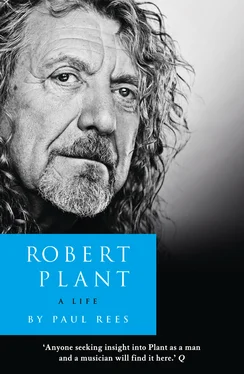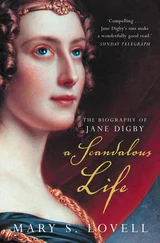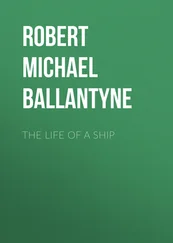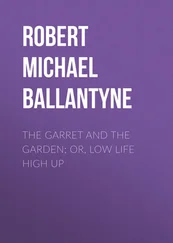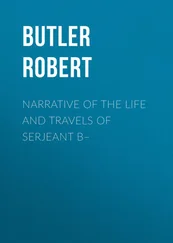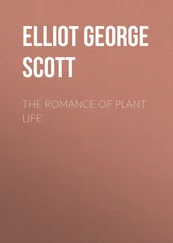In 1956 the mere act of Elvis swivelling his hips on TV’s Ed Sullivan Show was enough to shock America’s moral guardians. It was also instrumental in opening up the first real generational divide on either side of the Atlantic. Elvis’s gyrations acted as a rallying point for both British and American teenagers, and as an affront to their parents’ sense of moral decency.
In the English Midlands rock ’n’ roll first arrived in person in the form of Bill Haley. In 1954 Haley, who hailed from Michigan, released one of the first rock ’n’ roll singles, ‘Rock Around the Clock’. He followed it with an even bigger hit, ‘Shake, Rattle and Roll’. When, on his first British tour, he arrived at Birmingham Odeon in February 1957 the city’s teenagers queued all around the block for tickets. At the show itself they leapt out of their seats and danced wildly in the aisles. It mattered not one bit that, in the flesh, Haley had none of Elvis’s youthful virility.
Laurie Hornsby, a music historian from Birmingham, recalls: ‘The man who was responsible for going down to Southampton docks to meet Haley off the ship was Tony Hall, who was the promotions man for Decca Records in London. He told me that he stood there at the bottom of the ship’s gangplank, and down came this old-age pensioner hanging onto his hair for grim death. Hall thought, “My God, I’ve got to sell this to the British teenager.” But sell it he did.’
By the time Elvis burst onto the scene Plant was a primary-school boy. Tall for his age, he was blessed with good looks and a pile of wavy, blond hair. He might have been too young to grasp the precise nature of Elvis’s raw sex appeal but he was immediately drawn in by the untamed edge to his voice and the jungle beat of his music. From the age of nine he would hide himself behind the sofa in the front room at 64 Causey Farm Road and mime to Elvis’s records on the radio, a hairbrush taking the place of a microphone.
He soon progressed to the songs of Eddie Cochran and Gene Vincent. Each weekend he and his parents would gather around the TV set to watch the variety show Sunday Night at the London Palladium , and it was on this, in the spring of 1958, that the ten-year-old Plant first saw Buddy Holly & the Crickets. That year Holly also came to the Midlands, playing at Wolverhampton’s Gaumont Cinema on 7 March and, three days later, giving an early and later evening performance at Birmingham Town Hall.
By then Plant had begun to comb his hair into something that approximated Elvis’s and Cochran’s quiffs, much to the chagrin of his parents. He was also digesting the other sound then sweeping the UK, one that made the act of getting up and making music seem so much more attainable. Its roots lay in the African-American musical culture of the early 20th century – in jazz and blues. In the 1920s jug bands had sprung up in America’s southern states, so called because of their use of jugs and other homemade instruments. This music was revived thirty years later in Britain and given the name ‘skiffle’.
Britain’s undisputed King of Skiffle was Lonnie Donegan, a Glaswegian by birth who had begun playing in trad jazz bands in the early ’50s. Having taught himself to play banjo, Donegan formed a skiffle group that used cheap acoustic guitars, a washboard and a tea-chest bass. They performed American folk songs by the likes of Woody Guthrie and Leadbelly. Starting in 1955 with a speeded-up version of Leadbelly’s ‘Rock Island Line’, Donegan would go on to have twenty-four consecutive Top 30 hits in the UK, an unbroken run that stretched into the early ’60s.
Donegan’s success, and the simplicity of his set-up, prompted scores of British kids to form their own skiffle groups. One of these, the Quarrymen, was brought together in Liverpool in the spring of 1957 by the sixteen-year-old John Lennon. For his part, Plant was still too young and green to even contemplate forming a band. But in skiffle, as in rock ’n’ roll, he had located a route back to black America’s folk music, the blues. It was one he would soon follow with the tenacity of a pilgrim.
The thing that Plant thought about most on the morning of 10 September 1959, however, was not music but how little he liked his new school uniform. There he stood before his admiring mother dressed in short, grey trousers and long, grey socks, a white shirt, a red and green striped tie and green blazer, with a green cap flattening down his sculpted hair. At the age of eleven, and having passed his entrance exams, he was off to grammar school.
But not just to any grammar school. Plant had secured a place at King Edward VI Grammar School for Boys in Stourbridge, which had a reputation for being the best in the area. For his parents, his attending such an establishment would incur extra expense but would also impress the neighbours. The school had been founded in 1430 as the Chantry School of Holy Trinity and counted among its alumni the 18th-century writer Samuel Johnson. A boys-only school of 750 students, it was so steeped in tradition that first years were introduced in the school newspaper beneath the Latin heading salvete , the word used in ancient Rome to welcome a group of people.
On that first morning Plant and ninety or so other new arrivals were lined up outside the staff house in the school playground. Surrounding them were buildings of red brick, including the library with its vaulted ceilings and stained-glass windows. The masters in their black gowns and mortarboards came out and assigned each of them to one of three forms. Those boys who had excelled in their entrance exams and were considered to be future university candidates were gathered together in 1C. Plant was placed in the middle form, 1B.
The school operated a strict disciplinary code, one that was presided over by the headmaster, Richard Chambers. A tall man who wore horn-rimmed glasses, Chambers had a hooked nose that led students to christen him ‘The Beak’. Behind his back he was also mocked for a speech defect that prevented him from correctly pronouncing the letter ‘r’. But Chambers mostly engendered both respect and fear.
‘He was extremely strict, a sadist really,’ recalls Michael Richards, a fellow student of Plant’s. ‘If you got into trouble, he would call your name out in assembly in front of the whole school. You would have to go and stand outside his office, and eventually would be called in. He would reprimand you for whatever you’d done and then whack you across the backside four times with a cane. Then he’d tell you to come back after school. So you’d have all day to think about it and then you’d get the same again.’
In many respects Plant was, to begin with at least, a typical grammar-school boy. He collected stamps and during the winter months played rugby. Although the school did not play his beloved football – indeed footballs were banned from the playground – he would join groups of other boys in kicking a tennis ball about at break times, using their blazers as makeshift goalposts. In his second year he was nominated as 2B’s form monitor by his tutor, a role that gave him the giddy responsibilities of cleaning the blackboard and trooping along to the staff room to notify the other masters if a tutor failed to arrive for a lesson.
What marked him apart was his love of music and the manner in which he carried himself. Going about the school he would typically have a set of vinyl records tucked under his arm – and these, often as not, would be Elvis Presley records. He even took to imitating Elvis’s pigeon-toed walk.
‘Bloody hell, Rob did a fantastic Elvis impression,’ says Gary Tolley, who sat next to Plant in their form. ‘He was Elvis-crazy, but early Elvis, not the Elvis of G.I. Blues , when he’d started to go a bit showbiz. He was very into Eddie Cochran, too. He had the same quiff. When you see all those pictures of Cochran looking out from the side of his eyes at the camera, that was Robert.’
Читать дальше
